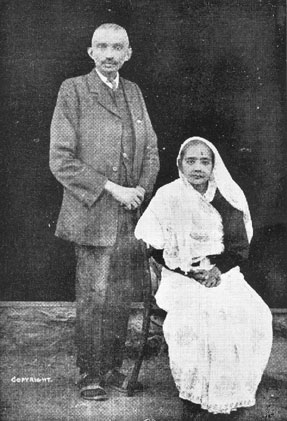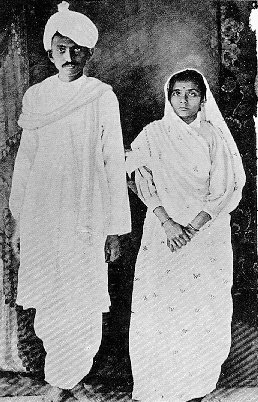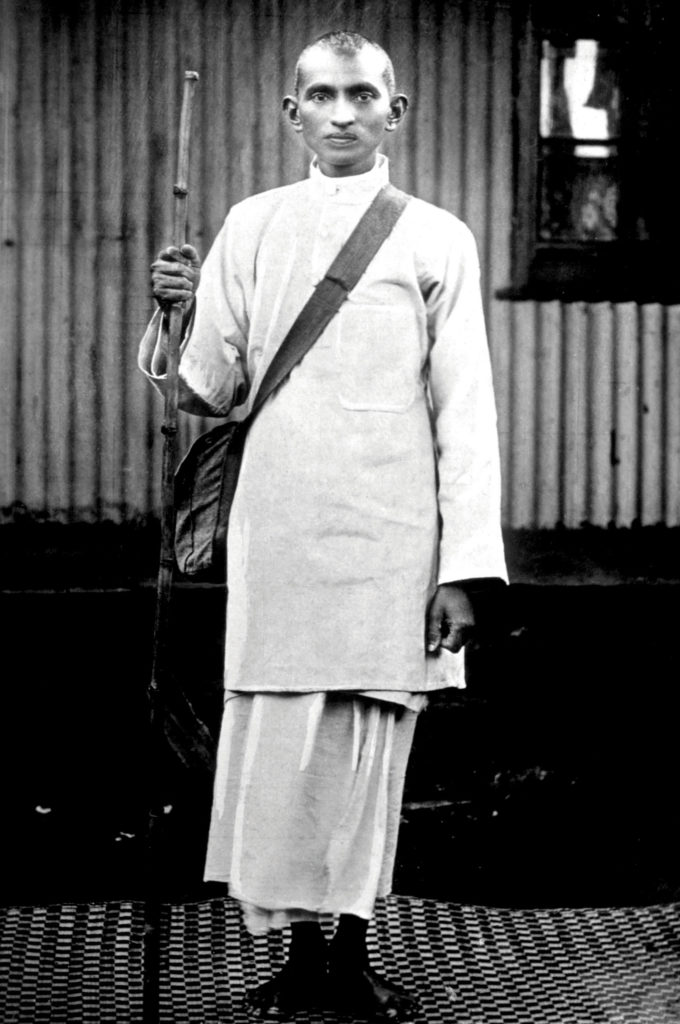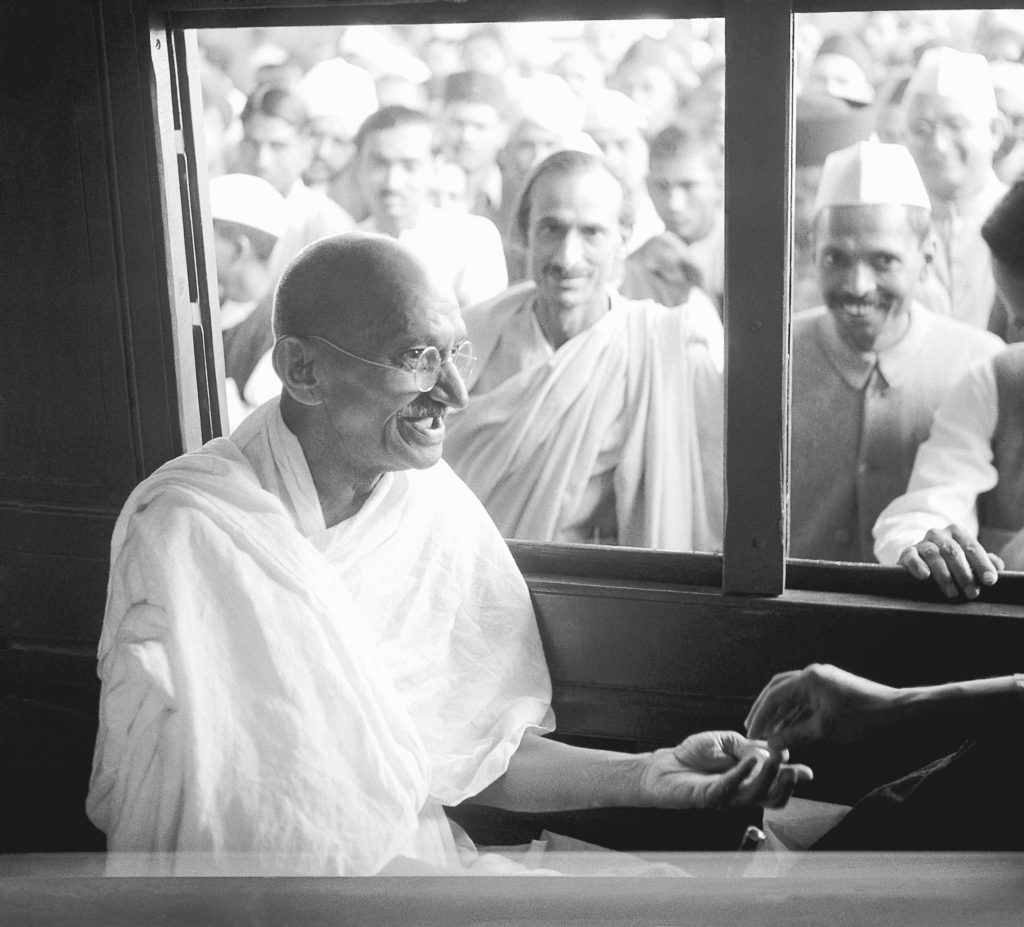Gandhi wasn’t born wearing khadi. Well, perhaps he was because most babies in India are wrapped in soft unstitched cloth which may well have been khadi.
But before he became the world’s most famous ambassador for this humblest of fabrics, he donned western attire, something that has been written about extensively– in his autobiography and by other scholars, especially Ramachandra Guha in his books.
Dress as Strategy
Even before he embarked on India’s freedom struggle, Gandhi was questioning what he called “the tinsel splendours of modern civilization.”
Gandhi’s genius was to understand the deep symbolism of dress and how it could unify a people. Handspun, handwoven khadi was a natural choice. It permeated India and had disappeared in plain sight. Gandhi by force of will wanted not just to revive it but also re-cloth a nation of diverse, disparate people
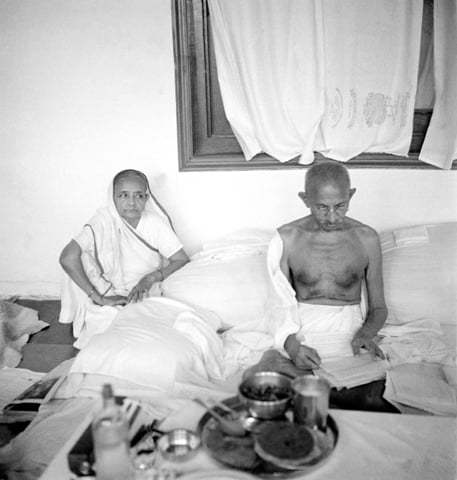
The Madurai Connection
The transformation happened in Madurai. It was here that Gandhi divested himself of all but a loincloth to be at one with the poor, who complained that they had no access to khadi.
“On the way (from Madras – now Chennai – to Madurai by train) I saw in our compartment crowds that were wholly unconcerned with what had happened. Almost without exception, they were bedecked in foreign fineries. I entered into conversation with some of them and pleaded for Khadi. They shook their heads as they said, ‘We are too poor to buy Khadi and it is so dear.’ I realised the substratum of truth behind the remark. I had my vest, cap and full dhoti on. When these uttered only partial truth, the millions of compulsorily naked men, save for their langoti four inches wide and nearly as many feet long, gave through their limbs the naked truth. What effective answer could I give them, if it was not to divest myself of every inch of clothing I decently could and thus to a still greater extent bring myself in line with ill-clad masses? And this I did the very next morning after the Madura meeting.”
The transformation was complete. All that was left was to convince a nation to follow in his footsteps. Although millions of people of that generation shed their finery, India was too diverse a country for a uniform of khadi to ever take shape or hold sway.
But that didn’t mean it was easy for Gandhi.
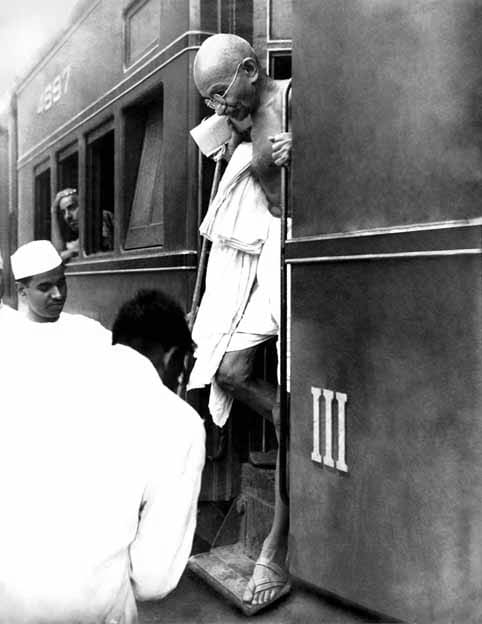
In the book, “Khadi: Gandhi’s mega symbol of subversion,” describes the agony Gandhiji went through before deciding to shed his traditional attire and switch to a loin cloth.
“The masses in Madras watch me with bewilderment. But if India calls me a lunatic, what then? […] Unless I went about with a loin-cloth, how might I advise others to do likewise? What should I do where millions have to go naked? […] The dress of the millions of agriculturists in India is really only the loin-cloth, and nothing more. […] I want the reader to measure from this the agony of my soul. I do not want either my co-workers or readers to adopt the loincloth. But I do wish that they should thoroughly realize the meaning of the boycott of foreign cloth and put forth their best effort to get it boycotted, and to get khadi manufactured. I do wish that they may understand that swadeshi means everything.“
The agony of his soul to ‘reduce himself to zero’, not just in words but in the physicality of his public presentation was excruciatingly painful.
On being asked at a conference to share his views on this manifestation of voluntary poverty he replied: “To possess nothing is, at first, not like taking your clothes off your body but like taking your flesh off your bones.”
Still, as you hear in the video of Gandhi’s speech below, resoluteness of will typified the Mahatma. Once he had made up his mind to uncloth himself, nothing, not even Winston Churchill’s comment that he was a half-naked seditious fakir would sway him.


